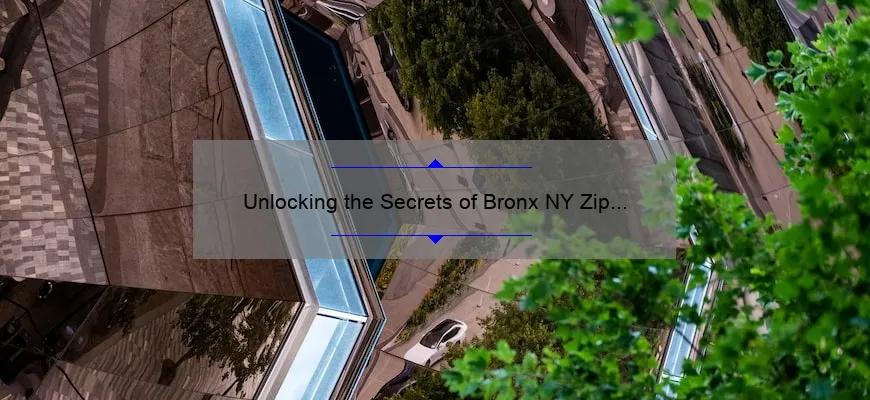Short answer the south bronx 1970s: The South Bronx in the 1970s was a poverty-stricken area with high crime rates, deteriorating infrastructure, and social problems. It became synonymous with urban decay and gang violence, leading to widespread depopulation. This era is often referred to as “The Bronx Is Burning.”
The South Bronx 1970s: Step-by-Step Journey to Redevelopment
The South Bronx in the 1970s was a place plagued by hardship. A once vibrant community, known for its home-grown music culture and thriving industrial sector, had become an urban wasteland marked by abandoned buildings, rampant crime, and poverty. The riots following the assassination of Martin Luther King Jr., coupled with governmental neglect and years of white flight led to economic depression that nearly decimated this New York City borough.
As a result of the decline in industry and resources, local businesses were unable to cope with the changing environment which left many unemployed. Thousands fled or were forced out of their homes during this era leaving behind vacant lots littered with rubble leading up to burned out buildings resembling hollow edifices that symbolized failure at every turn.
However, amidst all these troubles was one man who stood steadfastly determined to redevelop his beloved neighborhood: Major Robert O. Lowery Sr.
Major Robert Lowry began his journey long before he took over as Executive Director of the Mid-Bronx Desperadoes Community Housing Corporation (MBD) under Mayor John Lindsay’s administration in 1975–he started as a resident just like everyone else but believed there had been enough band-aid solutions over a number of decades; it was now time simple remedies stopped being applied when what they needed was surgical procedures tailored to bring about lasting change.
Lowry knew from experience that rebuilding communities required not only creative thinking outside-of-the-box but also focus on engaging both community leaders and stakeholders including business owners among others if any efforts are meant to succeed where previous ones failed more than once previously- hence why he drew everyone together towards common goals instead each group fighting alone unhappy results did nothing beneficial overall no matter how good intentions may have been individually held.
One step-by-step approach taken by MBD involved managing everything end-to-end -including identifying available vacant plots within neighborhoods that could be transformed into new housing units using cost-effective, energy-saving design principles. The team would then bring in skilled construction partners to build the new developments while still prioritizing safety and security measures.
To finance these initiatives MBD applied for grants and loans from both federal and state government authorities or private sector lenders. This way Lowry was able to leverage funds effectively bringing sustainable growth into business investments -among other things- which required long-term vision resulting not only improvement of economic status but also helped spur positive social change contributing positively towards an overall better quality of life for all involved – a win-win act benefiting everyone!
Major Robert O. Lowery Sr.’s dedication, perseverance, strategic planning skills together with his belief that anything could be achieved as long as everyone took on their responsibility led South Bronx out of extreme poverty breathed new life the community by revitalizing it physically economically culturally politically socially making this once blighted area centered again: like good wine aging well beyond their years becoming even more prosperous than ever before!
In conclusion, Major Robert O. Lowery Sr.’s approach represented remarkable Progressive ideology; he got down dirty ran a hands-on operation taking control challenges confronting them “outside of box.” His methods showcased how creative thinking partnership collaborations can achieve real solutions overcoming past problems affecting people’s daily lives where band aids never did much long term damage done previous decades failed him/her/them time after time meeting individual needs transforming communities prospering anew inclusive all irrespective color religion creeds culture specific characteristics one may identify -he left no stone unturned conveying range diversity creating something worthwhile great in scale success spanned generations part continued legacy today proving benefitting all imaginable!
The South Bronx 1970s FAQ: All You Need To Know About One of NYC’s Most Iconic Neighborhoods
The South Bronx in the 1970s was a bustling and dynamic neighborhood that held an important place in New York City’s history. Despite being plagued by social, economic, and political challenges of the time, including crime, poverty, gang violence, fires, crumbling infrastructure and urban decay; it remained a hub of creativity for music, art and literature.
Here are some FAQs about the South Bronx:
What made The South Bronx unique?
Back in the 1960s –70s era oil crisis along with climate change created major waves of de-industrialisation globally- many factories were shut down-resulting closure of mass employment opportunities .All these conditions led to socio-economic collapse leading people who lost work migrating towards cities severely disrupting established ethnographic communities. Unfortunately one such community that fell apart during this period was The South Bronx which formerly housed whites majority now turned predominantly African American & Hispanic minority.
How did Music become an integral part of the culture?
Music always had a presence in Latino-heavy neighborhoods which celebrated mariachi bands playing traditional Mexican music. With a blend of Jewish folk into their compositions salsa beats gained traction making it symbolic representation for cuban-salsa based pop-culture with exuberant Afro-Cuban rhythms rooted heavily on Puerto Rican migrants affecting artists like Tito Puente filling out chilly evenings at various clubs around town day after day becoming routine affair .
Why is Hip-Hop so deeply tied to The South Bronx’s identity today?
Multiple factors contributed here: Newly introduced structural government policies-led economy deterioration ushered-in migration where large population of youth migrated carrying cultural practices developing rap style rhymes focussed usually over street socieconomic challenges surrounding them – Hence raps challenging sociopolitical narrative became popularised through disco nights promoted underground break-dancing competitions all across NY’s neighbourhoods particularly however from its cradle “there” hip-hop quickly spread to other regions nationally helping enforce acceptance appreciation despite often coming under enemy radar pushed by experienced veterans artists overcoming huge setbacks with self-preservation.
Who were some of the notable figures that originated from The South Bronx?
Grandmaster Flash is often credited as one of the pioneers who helped popularize hip-hop and breakdancing, while Sylvia Robinson founded Sugarhill Records — a label known for launching the careers of many early rap stars. Immortalized in Hollywood blockbuster “The Warriors” gangs such as The Savage Skulls, the Black Spades and infamous Ghetto Brothers cut notorious profile during a tumultuous period posed not just fighting between each other but also against widespread hegemony- it became an instant hit across NY. Other cultural greats are Afrika Bambaataa later pioneering political activist engaged community asserting unity via music spreading messages to uplift chosen minority groups whilst promotors like DJ Kool Herc emerged gracing clubs all night long.
In conclusion, despite facing numerous socio-political challenges, the South Bronx managed to create an iconic image for itself through its art and music scene which continues to influence cultures around the world today. This extraordinary representation is most certainly acknowledged universally -framed within shared beliefs prejudices affecting people nationally globally making it one among best culturally diverse neighbourhood not just in America but globe over!
Top 5 Little-Known Facts about the South Bronx in the 1970s
When one thinks of the South Bronx in the 1970s, images of crumbling buildings, crime-infested streets and poverty are often conjured up. However, there are many lesser-known facts that paint a more complex picture of this iconic New York City neighborhood during this tumultuous time. Here are five fascinating tidbits about the South Bronx in the ’70s:
1) The Birthplace of Hip-Hop:
The wide-ranging musical genre that we know as hip-hop today was born on these very streets in the early 1970s. DJs would gather at community centers and parks to spin records and create new beats with turntables. MCing (the art of rapping) evolved from talking over these instrumentals, giving birth to what is now a global cultural phenomenon.
2) A Center for Graffiti Art:
The walls surrounding subway tracks and abandoned buildings around New York City were canvases for young artists looking to make their mark on urban landscapes. Some graffiti tags became synonymous with certain neighborhoods – individuals like TAKI183 started gaining prominence by tagging his name all across city subways – but it was within the active scene in The Bronx where writers honed their craft further still into some incredible mural works which can be found throughout NYC even until today!
3) Community Pride During Hard Times:
Despite much negative publicity painting an image of doom-and-gloom despair lingering over residents’ heads through martial law assemblies meant to curb gang activity; Motivated groups worked tirelessly to restore public faith and beautify areas deserving attention no matter what! Benefit events finally drew widespread attention bringing creative minds together towards growing positive change despite decaying properties falling down daily.
4) Social Action Groups Brought About Change Through Policy Advocacy :
During Mayor Lindsey’s term protests began covering everything including takeover school districts per individual district board members whose terms had expired leaving kids stranded because they could not hire teaching replacements or fund basic need supplies plus forgotten housing garantee funding received early interim results reducing crime and restoring hope even through the toughest of times.
5) Skateboarding in The Bronx:
Not too far from South Bronx is another New York City borough twenty-two-year-old skaters Chris Strople & John Wzeima boarded through deserted places searching for good runs! Early on this avante-gard approach to their skateboarding hobby gained little attention much interest, but eventually other like-driven types joined in with pioneering outdoor parks becoming widespread during 1978 signalling true acceptance outside only seen sneered upon elsewhere until today’s commitment towards skateboarder urban greening developments are highly sought after commodities!
In conclusion, what we see when looking back at photographs or watching old movies cannot properly reflect all the complex roads that led residents from day-to-day. Yet it is invaluable knowledge of these ‘Top five Little-Known Facts About The South Bronx During The 1970s’ combined which give insights into a very dynamic culture where passion birthed new beginnings amidst hardship; lessons achieved by reflecting about the past while keeping an open mind to learn more and improve our society together going forward will always continue unceasingly.








